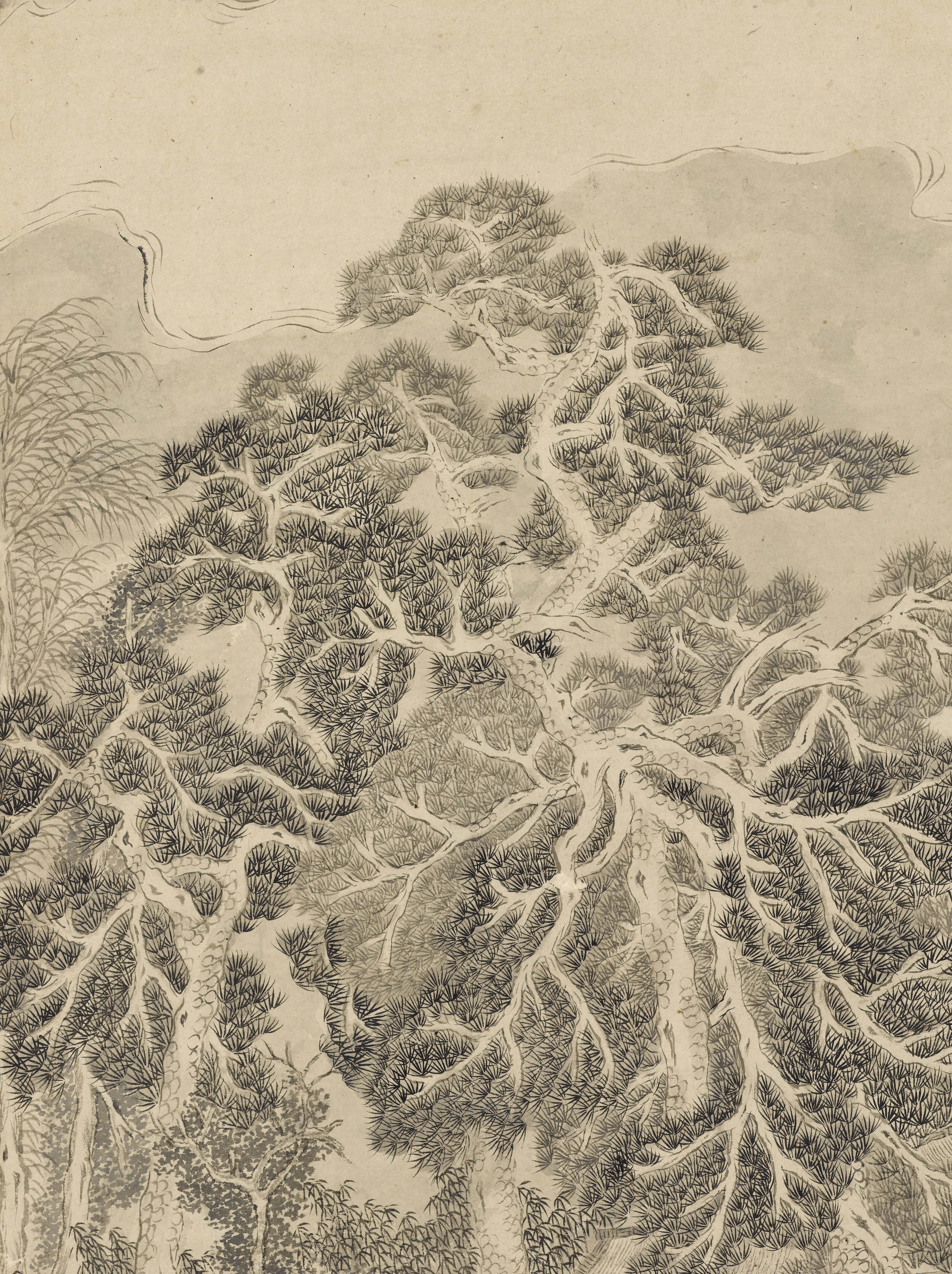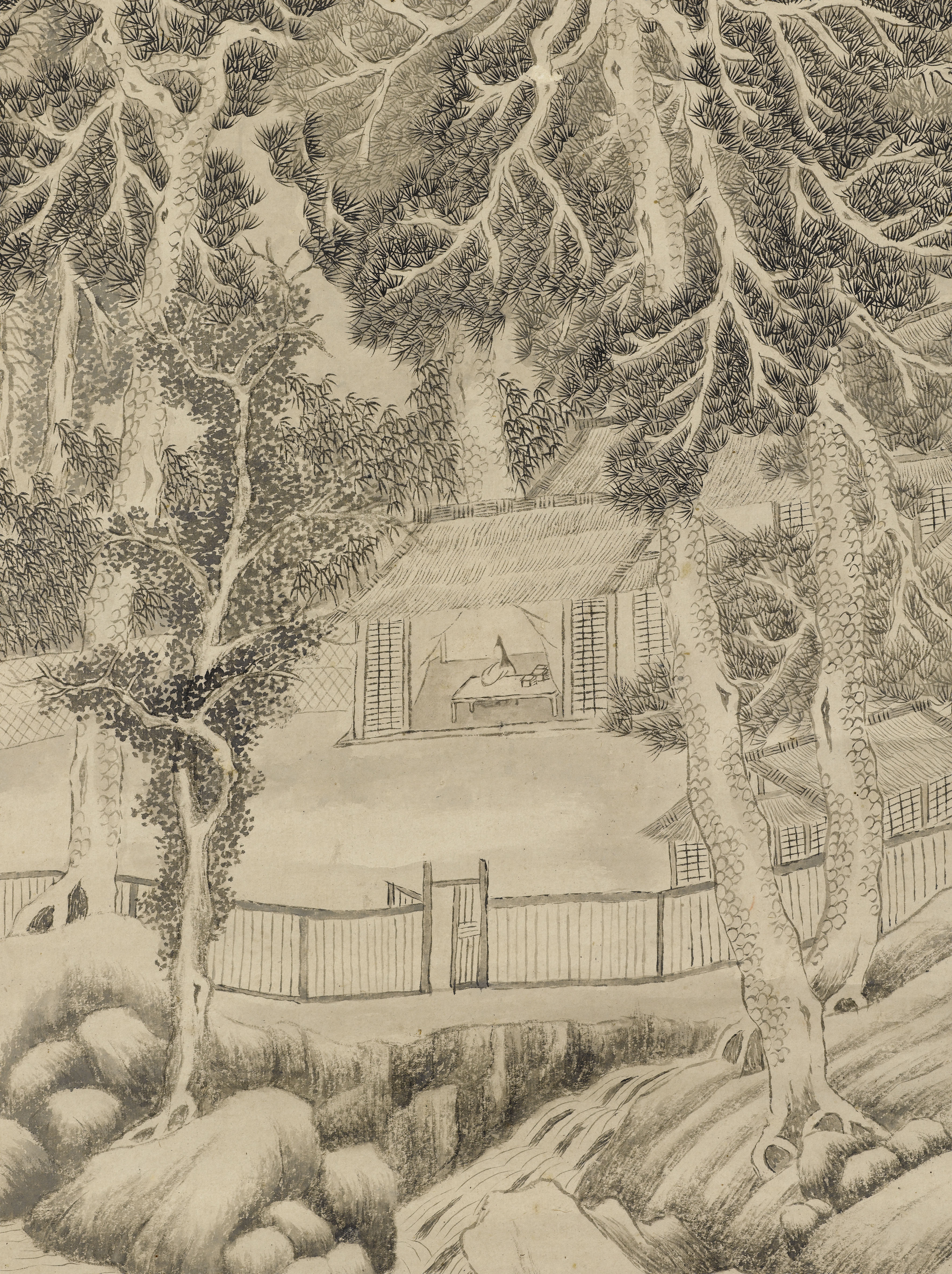
Paysage de neige
Papier, Encre
Peinture
Poème en haut à droite (quatrain heptasyllabique), daté et signé "Qian Shumei" 錢叔美 et suivi de deux sceaux de l'artiste.; 青峰草堂; 錢叔美; 松壺詩畫
Don manuel : Société des Amis du musée Cernuschi
M.C. 2008-4
Inscription and signature 款識:地鑪新爇通紅火,塔院時來寐歷鐘。滿屋芋香人未寢,坐聽風雪打杉松。此記前年在白下陶谷慶歲所作。山居風味每下筆時輙憶及之,觀者勿哂其胸次寒陋也。嘉慶戊寅十月望後。錢叔美并題記。
Seals of the painter 印:1.青峰草堂(白文) 2.錢叔美(朱文) 3.松壺詩畫(白文) Qian Du was a native of the Hangzhou area in Zhejiang, from a well-off family where the art of painting was cultivated. The family collection nurtured his painting, as did his travels. His literary and painted works illustrate the enduring vitality of cultural life and artistic creativity in Jiangnan, shortly before the Taiping Rebellion.
The snowy summits in this landscape rise above a shelter beneath great pine trees, where a solitary figure is seated. The originality of the composition derives from its long, narrow format: the compact mass of pines is echoed above by the silhouette of the mountains. The poem has a great simplicity, in harmony with the rigorous conditions of winter. It conjures up the stove nearby, the aroma of cooked vegetables, the noise of the wind in the branches. Qian Du indicates the circumstances of the work, describing the painting as a souvenir of his stay in Bai Xia, a region near Nanjing, in 1816.
Qian Du’s calligraphy, modelled after that of Yu Shinan 虞世南 (558-638) and of Chu Suiliang 褚遂良 (597-658), is inspired by the elegant script of Yun Shouping. The extremely meticulous painting recalls that of the Wu school, particularly the work of Wen Zhengming. Qian Du was able to study the master’s works in the family collection, and it had a strong influence on his own style. The calligraphy of Yun Shouping and the painting of Wen Zhengming are seen as models of refinement, yet Qian Du evidently strove to surpass his masters in the delicacy of his line.
Qian Du, who remained on the fringes of orthodoxy, liked to revisit the work of the masters of the 15th and 16th centuries while introducing coloured harmonies and foreshortening effects of his own. This painting of a winter landscape is typical of his style in its verticality and layering of the landscape elements. It can be compared to Qian Du’s painting in the Palace Museum, Beijing, which is of very similar dimensions and dated 1819, just a few months after this winter landscape.


